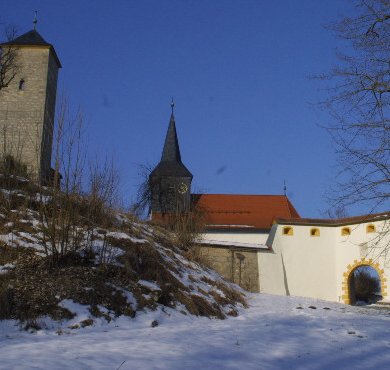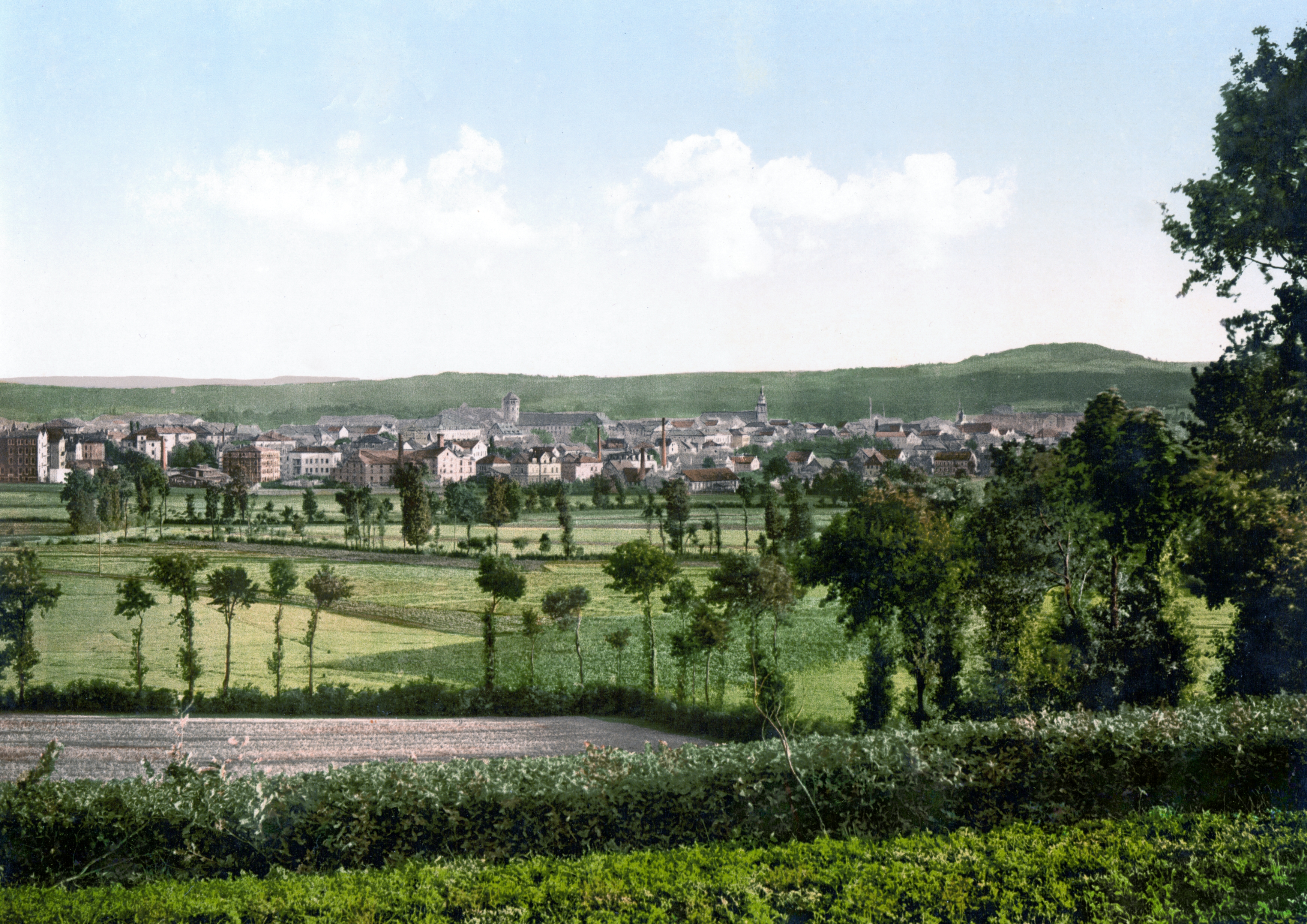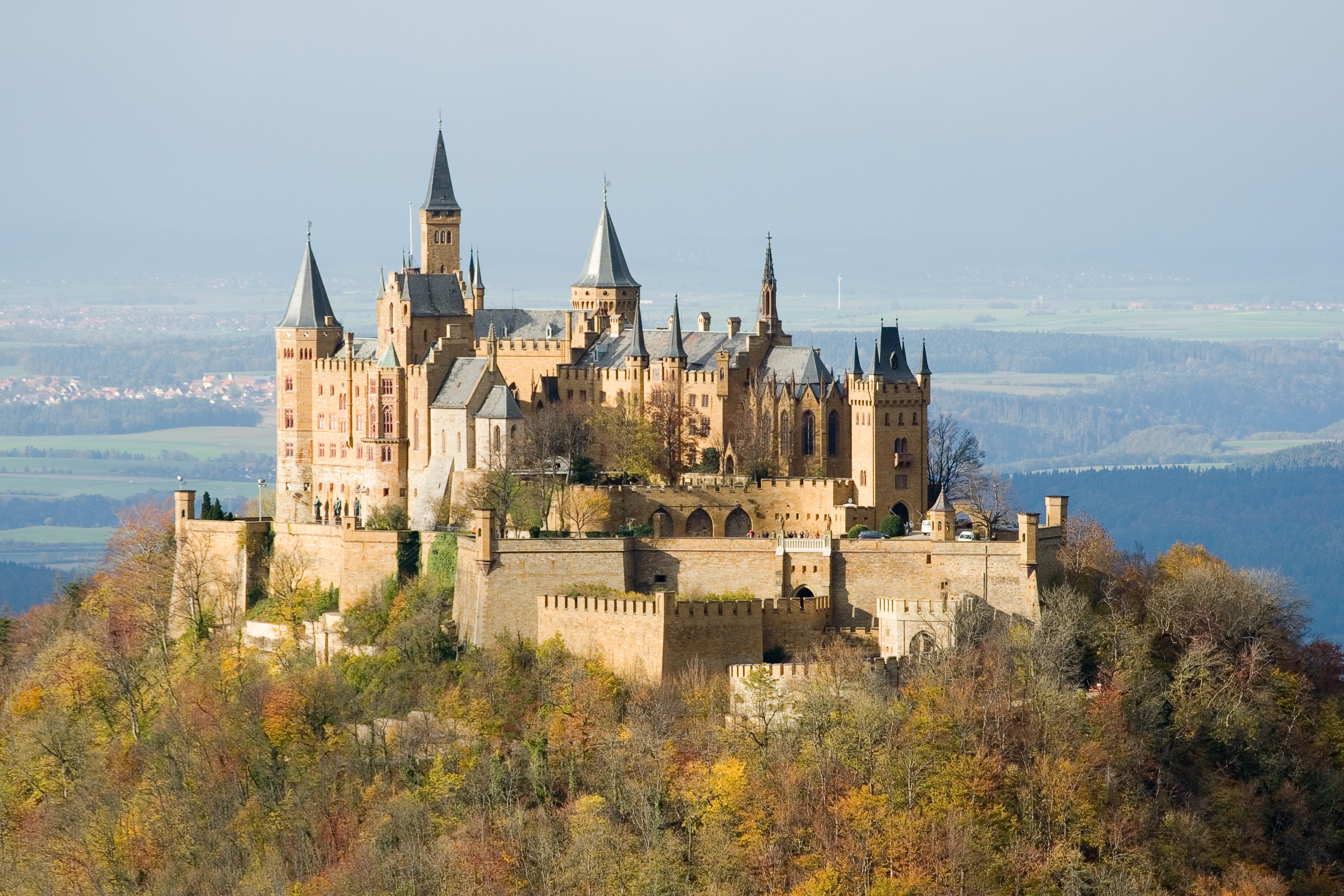|
Bayreuth (district)
Bayreuth () is a (district) in Bavaria, Germany. It surrounds, but does not include the city of Bayreuth. The district is bounded by (from the north and clockwise) the districts of Kulmbach (district), Kulmbach, Hof (district), Hof, Wunsiedel (district), Wunsiedel, Tirschenreuth (district), Tirschenreuth, Neustadt an der Waldnaab (district), Neustadt an der Waldnaab, Amberg-Sulzbach, Nürnberger Land, Forchheim (district), Forchheim and Bamberg (district), Bamberg. History The district was established in 1972 by merging the former districts of Bayreuth and Pegnitz (district), Pegnitz, adding the town Gefrees of the former district of Münchberg and the town of Speichersdorf of the former district of Kemnath. Geography The sources of the Main (river), White Main and the Red Main are both located in the district. The Red Main rises in the very south in the hills of the Frankish Alb, the White Main has its source in the Fichtel Mountains in the east. Both rivers run to the northwes ... [...More Info...] [...Related Items...] OR: [Wikipedia] [Google] [Baidu] |
Bayreuth
Bayreuth ( or ; High Franconian German, Upper Franconian: Bareid, ) is a Town#Germany, town in northern Bavaria, Germany, on the Red Main river in a valley between the Franconian Jura and the Fichtel Mountains. The town's roots date back to 1194. In the 21st century, it is the capital of Upper Franconia and has a population of 72,148 (2015). It hosts the annual Bayreuth Festival, at which performances of operas by the 19th-century German composer Richard Wagner are presented. History Middle Ages and Early Modern Period The town is believed to have been founded by the counts of County of Andechs, Andechs probably around the mid-12th century,Mayer, Bernd and Rückel, Gert (2009). ''Bayreuth – Tours on Foot'', Heinrichs-Verlag, Bamberg, p.5, . but was first mentioned in 1194 as ''Baierrute'' in a document by Bishop Otto VI of Andechs, Otto II of Bishopric of Bamberg, Bamberg. The syllable ''-rute'' may mean ''Rodung'' or "clearing", whilst ''Baier-'' indicates immigrants from ... [...More Info...] [...Related Items...] OR: [Wikipedia] [Google] [Baidu] |
Main (river)
The Main () is the longest tributary of the Rhine, one of the major List of rivers of Europe, European rivers. It rises as the White Main in the Fichtel Mountains of northeastern Bavaria and flows west through central Germany for to meet the Rhine below Rüsselsheim, Hesse. The cities of Mainz and Wiesbaden are close to the confluence. The largest cities on the Main are Frankfurt am Main, Offenbach am Main and Würzburg. It is the longest river lying entirely in Germany (if the Weser-Werra are considered separate). Geography The Main flows through the north and north-west of the States of Germany, state of Bavaria and then across southern Hesse; against the latter it demarcates a third state, Baden-Württemberg, east and west of Wertheim am Main, the northernmost town of that state. The upper end of its drainage basin, basin opposes that of the Danube where the watershed is recognised by natural biologists, sea salinity studies (and hydrology science more broadly) as the Eu ... [...More Info...] [...Related Items...] OR: [Wikipedia] [Google] [Baidu] |
Pottenstein, Bavaria
Pottenstein is a town in the district of Bayreuth, in Bavaria, Germany. It is situated 23 km southwest of Bayreuth, and 26 km east of Forchheim. History During World War II, a subcamp of Flossenbürg concentration camp was located here. Geography The city of Pottenstein, altitude 350–614 m AMSL, with its nearly 1,500 inhabitants, is a health-resort in Franconian Switzerland. It nestles at the convergence of the Püttlach, Weihersbach and Haselbrunn valleys surrounded by high cliffs and at the foot of the 1000-year-old castle, which has played an important role throughout the city's history. Mayors Since 2002 Stefan Frühbeißer (CWU-UWV) has been the mayor of Pottenstein. His predecessor was Dieter Bauernschmitt (CSU), who was in office for 12 years. [...More Info...] [...Related Items...] OR: [Wikipedia] [Google] [Baidu] |
Pegnitz (town)
Pegnitz () is a town in the Bayreuth district in Upper Franconia, Bavaria, Germany, with a population of approximately 15,000 inhabitants. It is also the source of the river Pegnitz (river), Pegnitz. The city Bayreuth is about 27 km to the north. The villages ''(Ortsteile)'' in Pegnitz are: Annual events are the Christmas market, the Open-Air Rock Festival ''Waldstock'', and above all, the Seasonal beer, seasonal strong-beer festival called ''Flinderer''. References Bayreuth (district) {{Bayreuthdistrict-geo-stub ... [...More Info...] [...Related Items...] OR: [Wikipedia] [Google] [Baidu] |
Hollfeld
Hollfeld is a town in the Bayreuth (district), district of Bayreuth, in Bavaria, Germany. It is situated 20 km west of Bayreuth, and 30 km east of Bamberg. Sport The towns association football club, ASV Hollfeld, experienced its greatest success in 2012 when it qualified for the new northern division of the expanded Bayernliga, the fifth tier of the German football league system, where it played for two seasons until 2014. Gallery File:Mariae Himmelfahrt Hollfeld 03.JPG, Mariä Himmelfahrt File:Gangolfsturm Hollfeld 01.JPG, Gangolfsturm Villages References External links Website (German) Bayreuth (district) {{Bayreuthdistrict-geo-stub ... [...More Info...] [...Related Items...] OR: [Wikipedia] [Google] [Baidu] |
Goldkronach
Goldkronach (East Franconian German, East Franconian: ''Gronich'') is a Town#Germany, town in the Bayreuth (district), district of Bayreuth, in Bavaria, Germany. It is situated near the Fichtel Mountains, 12 km northeast of Bayreuth. History On 25 June 1836, at 22:15, residents awoke to a man yelling "Fire! Fire!". In almost 2 hours, almost half of the eastern part of the town burned down, including the parish church, all two schools, the City Hall, 55 houses, and 16 other buildings. 127 families were rendered homeless. Three years later, on 18 June 1839 midnight, another fire broke out in the market. Within two hours, 29 houses and 17 buildings in the south side of town became the victims of the fire. Population development * 1961: 2945 * 1970: 2935 * 1987: 2903 * 2000: 3598 * 2010: 3606 Notable people * Sigismund von Reitzenstein (1766-1847), politician and diplomat of Baden Lived and worked in Goldkronach * Georgius Agricola (1494–1555), scholar of the Renaissance ... [...More Info...] [...Related Items...] OR: [Wikipedia] [Google] [Baidu] |
Gefrees
Gefrees () is a town in the district of Bayreuth, in Bavaria, Germany. It is situated in the Fichtel Mountains, 21 km northeast of Bayreuth. It was the site of a battle during the Napoleonic Wars {{Infobox military conflict , conflict = Napoleonic Wars , partof = the French Revolutionary and Napoleonic Wars , image = Napoleonic Wars (revision).jpg , caption = Left to right, top to bottom:Battl .... References Bayreuth (district) {{Bayreuthdistrict-geo-stub ... [...More Info...] [...Related Items...] OR: [Wikipedia] [Google] [Baidu] |
Creußen
Creußen is a town in the district of Bayreuth in Bavaria, Germany. It is situated on the Red Main river, 13 km southeast of Bayreuth. Creußen is famous for its stoneware beer steins. Creußen is the starting point of the Red Main branch of the Main-Radweg bicycle path which stretches about 600 km along the Main until the mouth into the Rhine The Rhine ( ) is one of the List of rivers of Europe, major rivers in Europe. The river begins in the Swiss canton of Graubünden in the southeastern Swiss Alps. It forms part of the Swiss-Liechtenstein border, then part of the Austria–Swit .... Notable people * Christoph Wirth (1870–1950), German physicist and inventor References Bayreuth (district) {{Bayreuthdistrict-geo-stub ... [...More Info...] [...Related Items...] OR: [Wikipedia] [Google] [Baidu] |
Betzenstein
Betzenstein () is a town in the district of Bayreuth, in Bavaria, Germany. It is situated in the Franconian Switzerland, 35 km northeast of Nuremberg Nuremberg (, ; ; in the local East Franconian dialect: ''Nämberch'' ) is the Franconia#Towns and cities, largest city in Franconia, the List of cities in Bavaria by population, second-largest city in the States of Germany, German state of Bav .... References Bayreuth (district) {{Bayreuthdistrict-geo-stub ... [...More Info...] [...Related Items...] OR: [Wikipedia] [Google] [Baidu] |
Bad Berneck
Bad Berneck im Fichtelgebirge () is a spa town in the district of Bayreuth, in Bavaria, Germany. It is situated on the White Main river, in the Fichtel Mountains, 13 km northeast of Bayreuth. It lies in the northern part of the Bavarian province of Upper Franconia. Since 1857 it has been a spa, initially based on its climate and whey products. In 1930 it became a Kneipp spa and, in 1950, a Kneipp health spa. Geography The town of Bad Berneck lies on the western edge of the Fichtel Mountains in the Ölschnitz valley, which enters the White Main below the old town or ''Altstadt''. The ''Mainberg'' (624 m above NN) and ''Wolfenberg'' (598 m above NN) are the highest peaks in the parish. Neighbouring communities Bad Berneck's neighbouring parishes (in clockwise order) are: Gefrees, Goldkronach, Bindlach, Harsdorf, Himmelkron and Marktschorgast. The town of Bayreuth is about from Bad Berneck. Sub-divisions History The exact date of Bad Berneck's foundation ... [...More Info...] [...Related Items...] OR: [Wikipedia] [Google] [Baidu] |
Hohenzollern
The House of Hohenzollern (, ; , ; ) is a formerly royal (and from 1871 to 1918, imperial) German dynasty whose members were variously princes, electors, kings and emperors of Hohenzollern, Brandenburg, Prussia, the German Empire, and Romania. The family came from the area around the town of Hechingen in Swabia during the late 11th century and took their name from Hohenzollern Castle. The first ancestors of the Hohenzollerns were mentioned in 1061. The Hohenzollern family split into two branches, the Catholic Swabian branch and the Protestant Franconian branch,''Genealogisches Handbuch des Adels, Fürstliche Häuser'' XIX. "Haus Hohenzollern". C.A. Starke Verlag, 2011, pp. 30–33. . which ruled the Burgraviate of Nuremberg and later became the Brandenburg-Prussian branch. The Swabian branch ruled the principalities of Hohenzollern-Hechingen and Hohenzollern-Sigmaringen until 1849, and also ruled Romania from 1866 to 1947. Members of the Franconian branch became Margrave of ... [...More Info...] [...Related Items...] OR: [Wikipedia] [Google] [Baidu] |
Veldenstein Forest
The Veldenstein Forest () lies in the east of the Franconian Switzerland-Veldenstein Forest Nature Park between the towns of Pegnitz (town), Pegnitz and Plech. Its name is derived from Veldenstein Castle, a large, well preserved, medieval fortification above Neuhaus an der Pegnitz. The Veldenstein Forest, with its extensive pine and spruce woods has an area of around 70 km2 and is one of the largest contiguous areas of forest in Bavaria. A large part of the Veldenstein Forest lies on the territory of the district of Landkreis Bayreuth, Bayreuth and forms the fourth largest unincorporated area in Bavaria (55.60 km2). Sights A particular attraction in the Veldenstein Forest is the wildlife park. In the east the nature reserve (Germany), nature reserve of ''Pegnitzau zwischen Ranna und Michelfeld'' borders immediately on the forest. The forest also has numerous rock formations, caves and Sinkhole, dolines, some of which are classified as natural monuments or geotopes. R ... [...More Info...] [...Related Items...] OR: [Wikipedia] [Google] [Baidu] |






